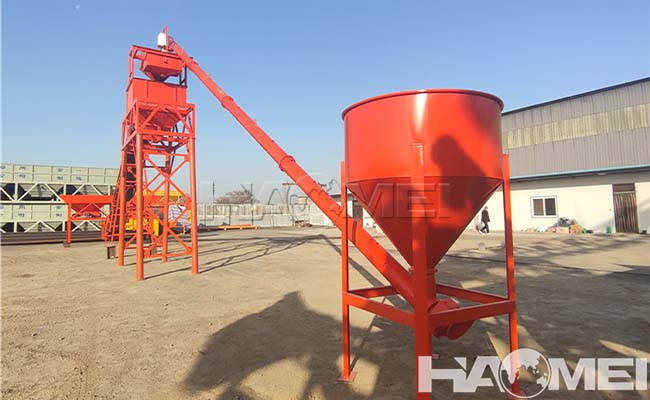
Concrete batching plants are indeed divided into two types: dry batch concrete plants and wet batch concrete plants, each of which has unique characteristics and application scenarios. Generally speaking, wet batch concrete plants may require more complex equipment and technology to ensure the stability of the concrete's quality due to the fact that their production process involves the transportation and preservation of the mix, and thus the price may be relatively high. On the other hand, dry batch concrete plants have relatively lower technical requirements in the production process, and the equipment configuration may be relatively simple and the price may be relatively low. When using a concrete batching plant on a construction site, the choice between a dry batch concrete plant or a wet batch concrete plant depends mainly on the specific construction needs, environmental conditions and resource allocation.

Below is a detailed comparison of dry batch concrete plant vs wet batch plant:
Working Principle:
The working principle of a dry batch concrete plant is to mix dry materials such as cement, sand, and stone according to a predetermined ratio, but without adding water. The production of dry mix concrete is completed at the mixing plant, after which the mixed dry materials are transported to the construction site through transportation trucks, and then water is added and mixed into concrete at the site.
Wet batch concrete plant, on the other hand, mixes raw materials such as cement, sand, stone and water in a certain proportion during the working process to form wet mix concrete. After mixing in the mixing plant, wet-mix concrete can be directly transported to the construction site for pouring.
Advantages and disadvantages:
The advantage of dry-mixed concrete is that segregation and stratification are not easy to occur during transportation, which ensures the stable quality of concrete. However, its disadvantage is that it needs to be mixed with water at the construction site, which requires high skills of the workers on site, and the mixing process may be affected by environmental conditions, resulting in fluctuations in the quality of concrete.
Wet-mixed concrete has the advantages of high production efficiency and lower skill requirements for on-site personnel. However, its disadvantages are that segregation and stratification are likely to occur during transportation, there are certain restrictions on transportation time and distance, and the quality of the mixture may not be as stable as that of dry-mixed concrete.
Application Scenario:
Dry batch concrete plant is suitable for situations that require long-distance transportation or restricted on-site mixing conditions. Because of the stable quality of concrete during transportation, it is especially suitable for large-scale projects or occasions where the quality of concrete is required to be high.
Wet batch concrete plant is suitable for the case of closer to the construction site and shorter transportation time. Due to its high production efficiency and low skill requirements for on-site workers, it is especially suitable for small-scale projects or occasions with a tight schedule.
In summary, dry batch concrete plant and wet batch concrete plant have their own characteristics and advantages, and the choice of which concrete batching plant mainly depends on the demand of specific projects, transportation conditions and quality requirements and other factors. In actual application, the selection and configuration should be made according to the specific situation to ensure the quality and efficiency of concrete production.